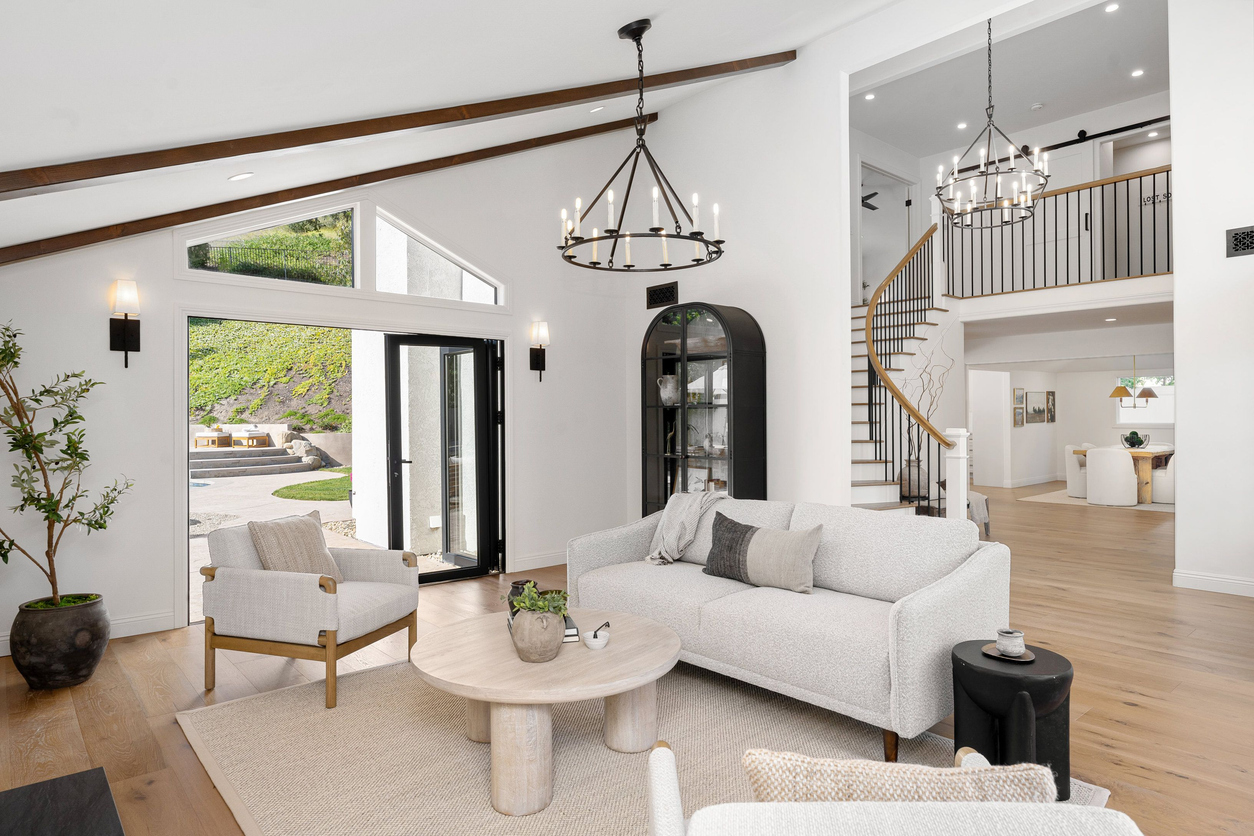Check out any fancy neighborhood. These houses aren't just big; somebody put some thought into them.
Big windows to let the sun in, quiet home offices to get work done, and kitchens big enough for everyone to hang out in. These houses aren't just for show; they're built for keeps.
This says something, right? For more and more bosses, how they design their home is on purpose. It's about getting things done, feeling good, and building something that will last longer than the latest fads.
The Executive Perspective on Modern House Plans
Executives are used to making choices that ripple far beyond the present moment. Their business instincts tell them to think in terms of legacy, efficiency, and adaptability. Increasingly, those instincts are spilling over into the way they approach their homes.
Residential design has become more than a lifestyle preference. For leaders with an eye on the future, it’s a strategy. A house can anchor family life, project personal values, and quietly function as one of the most important investments in a portfolio.
It’s not uncommon now to hear executives talk about square footage and layouts in the same breath as sustainability metrics or long-term marketability. A floor plan isn’t just architecture; it’s foresight drawn in lines and proportions.
Homes as Strategic Investments
To most people, a house is shelter. To an executive, it’s often an asset that must perform.
The calculus goes well beyond aesthetics. Will the neighborhood appreciate? Is the design flexible enough to appeal to future buyers? Does the home feel like a place where family traditions can grow — and still hold its value decades down the line?
One private equity partner summed it up candidly: “I think about my house the way I think about any investment. Is it positioned to do well in the long run? Does it add value to my life now, and will it add value later?”
It’s a revealing mindset. Where others see walls and windows, executives often see equity and legacy.
Balancing Luxury with Functionality
Luxury has shifted. Not long ago, it meant ornate spaces that dazzled guests but left families tiptoeing around unused rooms. A dining hall fit for banquets. A library no one actually read in.
Today’s leaders are asking for something different. Luxury, to them, is design that feels indulgent but lives practically.
A grand entryway is still welcome, but only if it flows into spaces that support daily routines. Kitchens aren’t just for cooking anymore — they’re gathering spaces, informal boardrooms, and family hubs rolled into one.
One CFO captured the shift well: “If I can’t leave my office, grab a coffee, and then sit down with my kids in five minutes, the design is broken.”
This is exactly where house plans by Archival Designs strike a balance. They capture the elegance executives expect without falling into waste. Rooms breathe. Spaces feel intentional. Every corner works harder, blending aesthetics with practicality. For people used to maximizing resources, that balance feels like the truest luxury of all.
A Guide to Choosing the Right House Plan
Executives are no strangers to frameworks. They build them, rely on them, and refine them daily. When it comes to choosing a house plan, many apply a familiar decision-making model — one that weighs both tangible and intangible returns.
The framework usually covers:
- Location: Not just “good schools” but future growth. Where will this neighborhood be in ten years?
- Square Footage & Layout: Enough for today, flexible for tomorrow.
- Sustainability: Energy efficiency as both a cost-saving measure and a values statement.
- Family Needs: Can it adapt to young children, teenagers, or even aging parents?
- Resale Potential: Will the home hold its appeal when passed to the next owner — or the next generation?
This guide to choosing the right house plan mirrors the way executives make business calls: analyze data, anticipate shifts, and choose for resilience.
What sets it apart is the personal layer. A spreadsheet can’t predict how it feels to imagine family dinners in a certain room, or summer evenings on a particular porch. That’s where instinct and strategy meet.
The Role of Customization in Executive Homes
Leadership is often about vision, and customization is where that vision becomes visible. Executives who commission custom plans rarely want something flashy. They want something that feels like them.
Some lean into hybrid lifestyles — floor plans with dedicated offices, wellness spaces, and flexible guest suites. Others prioritize open kitchens where both colleagues and relatives feel equally welcome.
A few go further, creating homes that double as retreats, blurring the lines between professional hosting and personal sanctuary.
Customization means leaders can create a home, not just build a house. The design can show off their values and the feeling they want family and friends to experience when they visit.
What's Next in Design: Green Homes, Tech, and Comfort
People care about being sustainable, having upgraded tech, and feeling good. These priorities affect home design.
- Sustainability: Green roofs, solar panels, and water systems aren't just good for the planet; they will cut costs down the road.
- Tech: Smart home systems for lights, temperature, and security offer simple automation.
- Wellness: Meditation rooms, clean air systems, and designs that use sunlight are becoming must-haves, not just nice extras.
Top people get these ideas because they're already pushing them at their jobs. Bringing them home feels less like a trend and more like alignment.
One design consultant put it bluntly: “If an executive spends their career talking about innovation but lives in a home that ignores it, the story doesn’t add up.” Future-ready homes close that gap.
Leadership Lessons: Make Your Vision Match Your Plan
Running a business? Think of it like building a house. You gotta know what you want, plan it out, and be ready to switch things up when life gets tricky.
Anyone in charge knows plans can go sideways. The world shifts, industries change, and families grow. Like companies, homes need makeovers too. Picking the best plan means building something tough that can handle anything. It's not about being perfect from the go!
That's why many leaders feel their homes show how they lead. Strategic yet flexible. Ambitious yet grounded.
The Bottom Line
At its best, residential design is more than architecture. It’s an outward expression of the values guiding a life. Executives understand this instinctively. They don’t just want square footage; they want a place that embodies foresight, sustainability, and purpose.
By approaching their homes as they approach their companies — with vision, responsibility, and adaptability — leaders are crafting spaces that aren’t just beautiful or functional. They’re timeless.
Strategic living isn’t a passing fascination. For today’s executives, it’s a philosophy. One that turns every floor plan into a blueprint for legacy.














